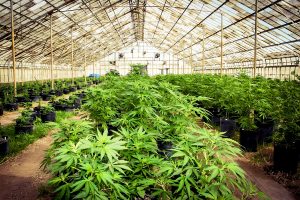A growing problem: Cannabis farms look into reducing carbon footprint

A typical cannabis indoor farm may not be the most environmental-friendly operation. In a protected, controlled environment, a cannabis farm uses a massive amount of electricity and releases harmful carbon emissions.
A recent study estimated an indoor cannabis plant takes the equivalent of 70 gallons of oil to grow. In Colorado, the energy demand of its biggest utility increased by 2 percent when cannabis was legalized.
According to Tim Hade, co-founder of Scale, a company in New York, it will be challenging to maintain the energy consumption at stable levels, as the legalized cannabis industry keeps expanding.
“It’s a big problem,” Hade said. “It has an impact far beyond cannabis consumption.”
Farmers are now looking into more efficient ways to grow the plant by using less electricity. Large-scale cultivations may find more innovative ways to address the issue and adopt renewable energy, in order to protect the environment.
Solar energy, batteries and alternative fuels would be the solution to lower greenhouse emissions.
Scale is one of the companies that has started to integrate these new measures and combines solar, battery storage and natural gas generators to save energy cost by up to 35 percent.
JP Martin, founder of GrowX, an agricultural technology company, has produced prototypes for an aeroponic growing system, in which the roots of the plant hang suspended in the air while nutrient solution is delivered to them in the form of a fine mist.
The system uses less energy and water than hydroponic growing and eliminates impurities developed from the soil as well.
“Traditional farming is a broken model,” Martin said.
Other farmers have turned to a traditional, natural approach of growing their crops.
Waterdog Herb Farm in Mendocino County, Calif., operates indoors and produces high-quality strains of cannabis on a 160-acre homestead. The farm is also powered by renewable resources.
“Nature is providing us with a very good environment,” Cyril Guthridge, owner and operator the farm, said.







